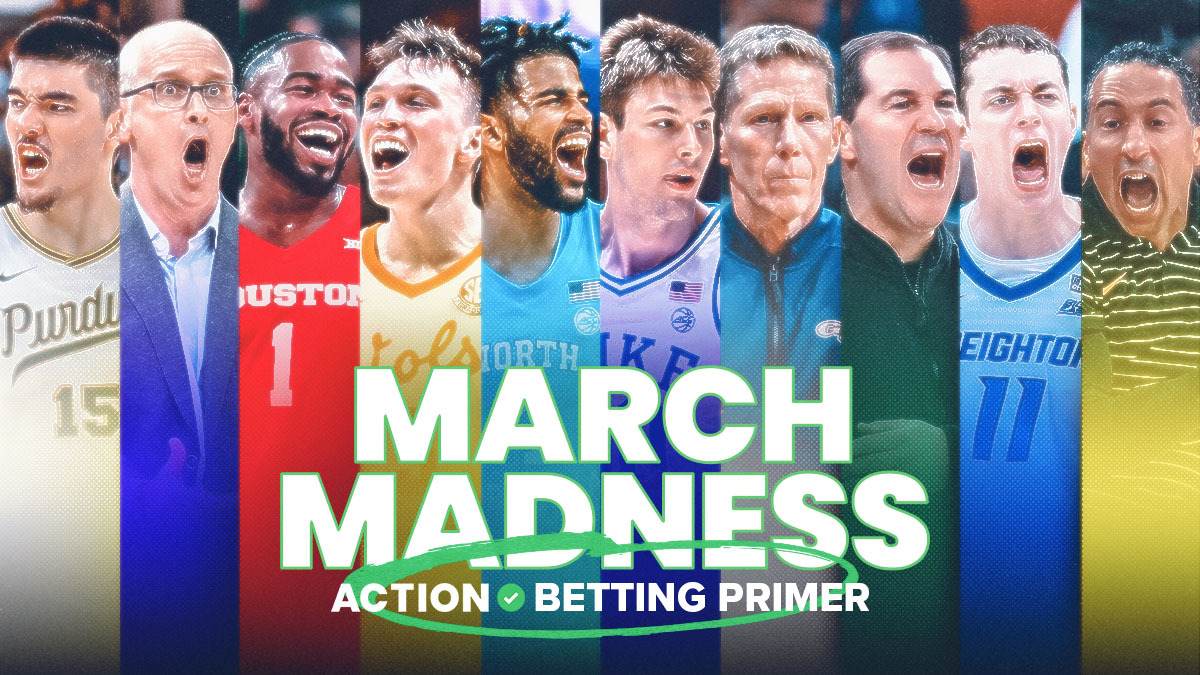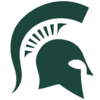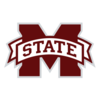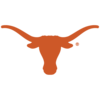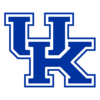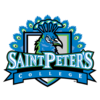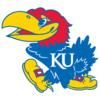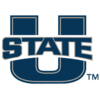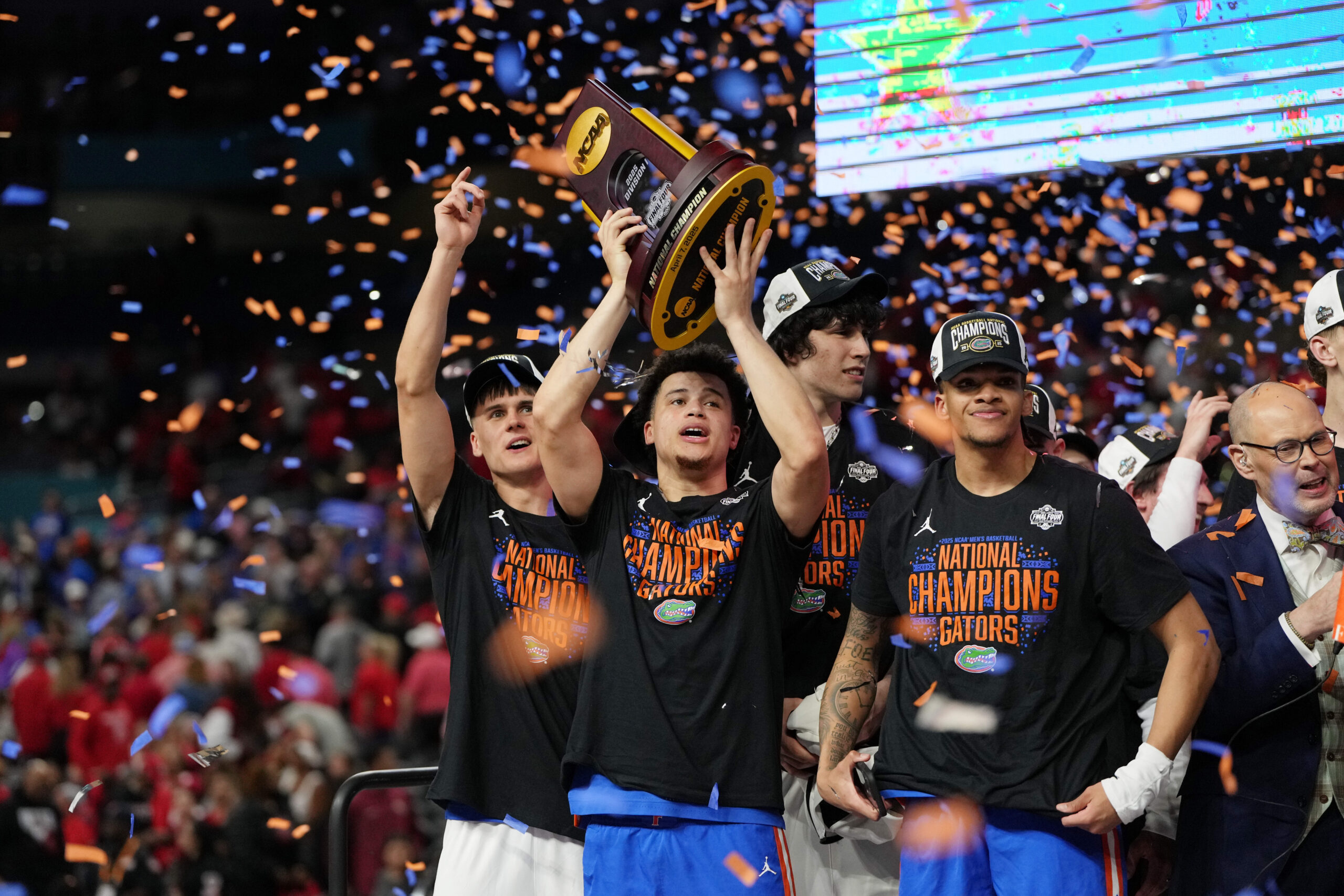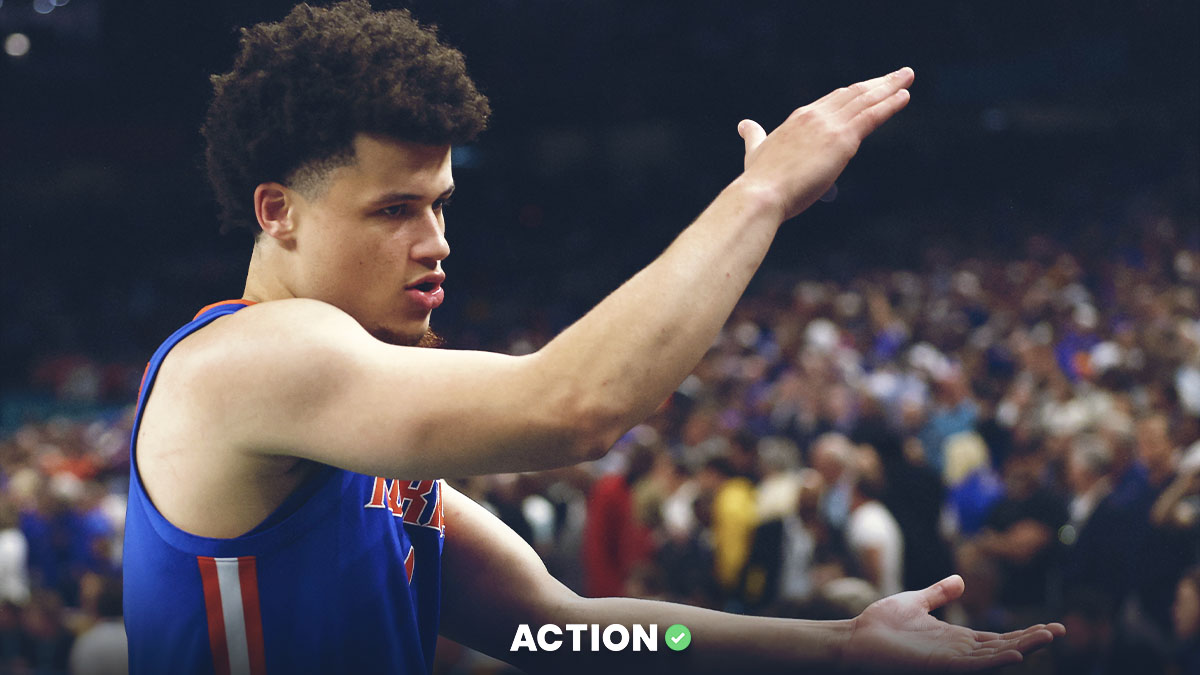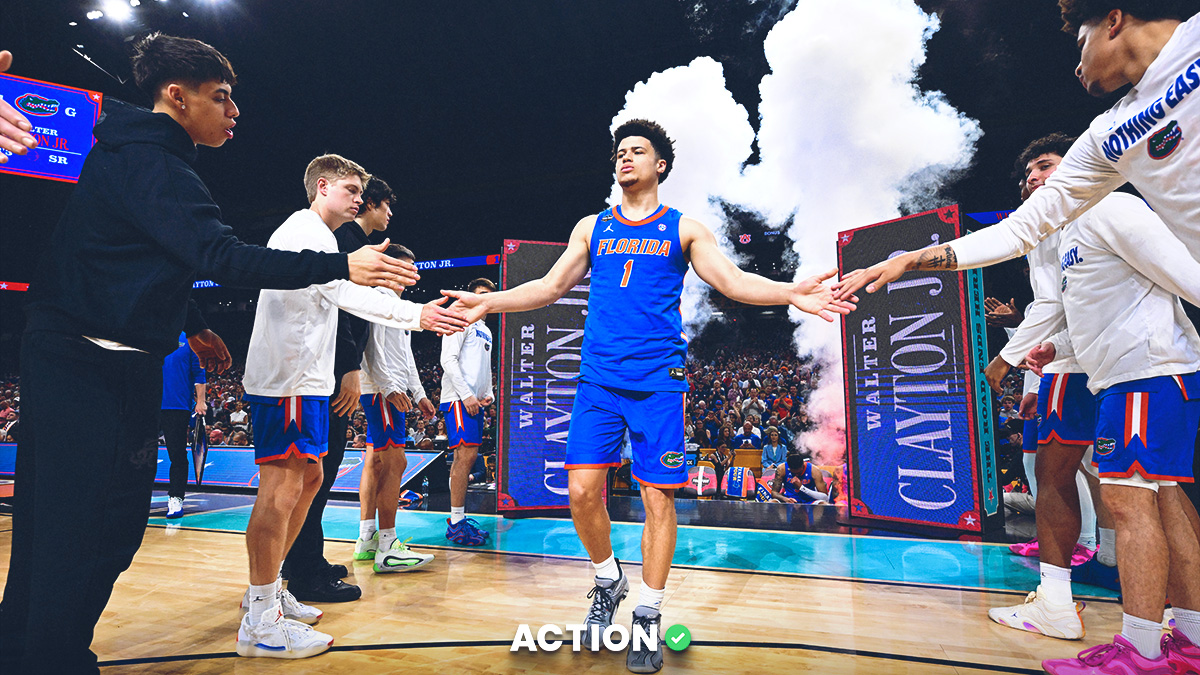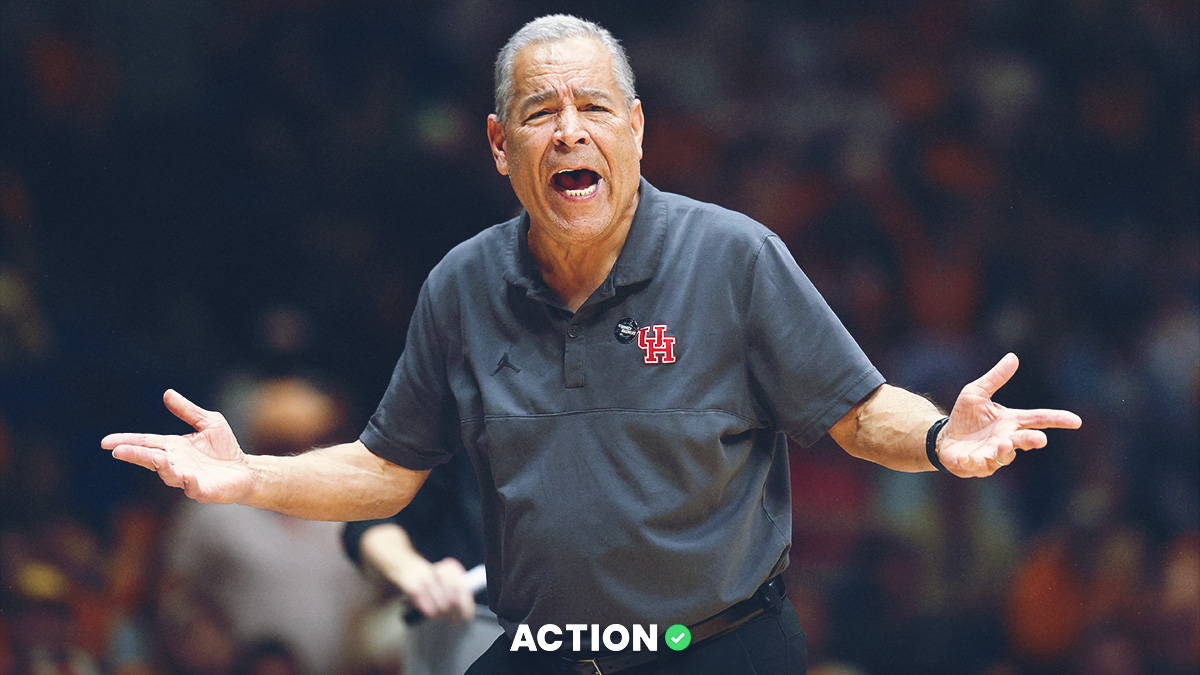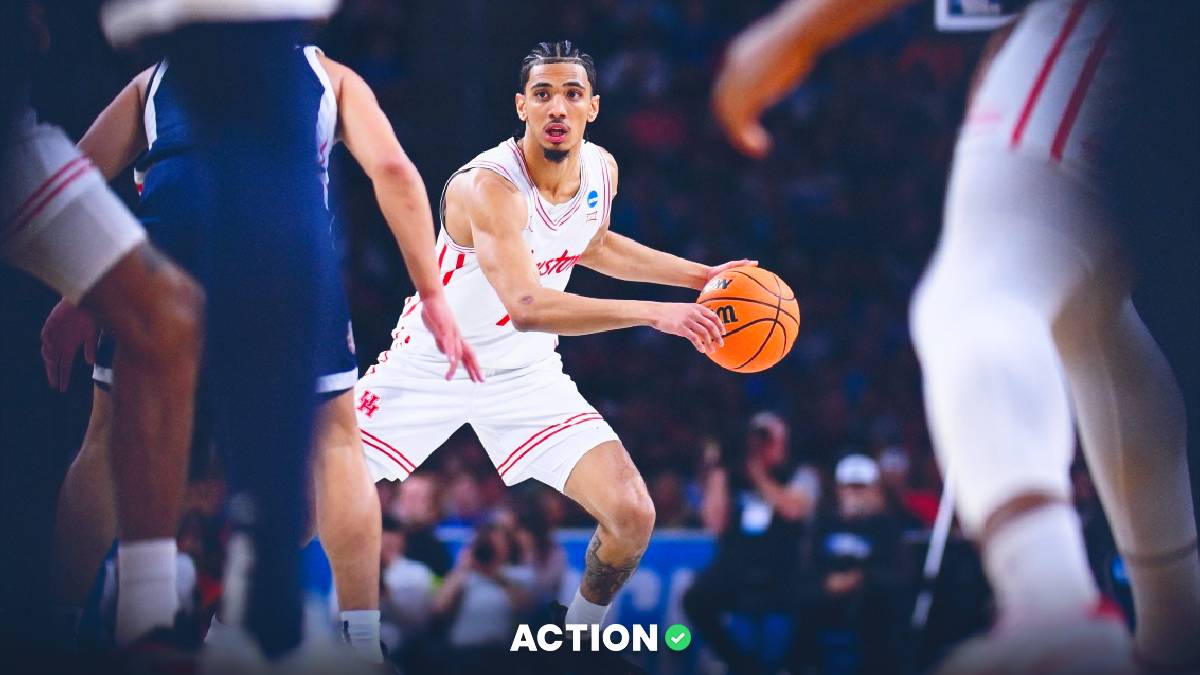March Madness Betting Trends, Stats, Notes: Action Network Betting Primer
Before we start — it is important to know this is a live running article. Content, matchups, odds, trends, systems will all be added through the piece through the first round of action on Sunday March 24th (check the updated as of date below!).
We're here to answer tourney questions, dish out stats and facts, talk futures, the bracket, coaches, cinderella and more. Welcome to the March Madness edition of Action Network's betting primer.
All data, stats and trends are updated as of Thursday, March 21, 12 p.m. ET.
Time To Repeat?
Connecticut Joins List
The Connecticut Huskies won the National Championship last year and are now the betting favorites entering the following tournament with a chance to repeat.
Since 1976, 2024 UConn is the 7th team to be favored to repeat entering the following tournament. The last was Florida in 2007, who completed the task and repeated. Of the previous six teams, 2007 Florida and 1992 Duke are the only two to go back-to-back.

Up, Up and Away
The Alabama Rocket
The Charleston-Alabama total is sitting at 173.5 across multiple books. No NCAAT game has closed with a total of even 168 or more since 2002 and the last game this high was back in 1995 at 177. The O/U in Charleston-Alabama opened at 168.5 — the five point increase is the most for any NCAAT total in three years and another 0.5 pt it will be biggest rise since 2019.

Mountain Cover Up
Tough Going
Since 2016, the Mountain West conference is 8-17 ATS (-$973 on $100 bet, -38.9%) in the NCAA Tournament. Of conferences with at least 10 tourney games played in that span, that is the lowest ROI of any conference and the third-least profitable of any conference ahead of just the WCC (-$986) and SEC (-$1,369).
Double-digit seeds in the Mountain West conference are now 2-27 all-time SU in the tourney, including 5-22-2 ATS.

Quiet on the Western Front
Is This The Year?
Since Arizona won the national title in 1997, no team west of Texas has won it all.

Momentum Matters Sometimes
Don't Lose Early
Since seeding began in 1978, every NCAA champion — 100% of them — to play in a conference tournament made it to at least their conference semifinals (won at least one game). In that span, eight champions never actually had a conference tournament ('97 ARI, '95 UCLA, '89 MICH, '87 IU, '81 IU, '79 MSU, '78 UK, '77 MARQ).
If this trend holds true, here are some of the candidates this eliminates this year: Duke, Creighton, Tennessee.

Cinderella Rollercoaster
Ups and Downs
According to our Bet Labs database, after a team pulls off a double-digit point spread upset in the NCAA Tournament, they are 4-18 straight up and 7-15 against the spread in the next round, dating back to 2005. Those such teams were 0-9 straight up between 2005 and 2013. Florida Gulf Coast broke the streak in 2013. Oral Roberts in 2021, Saint Peter's in 2022 and Princeton in 2023 have now all put up a win in this spot the last three years.

Reminder!
Weak Favorites
The only team since 1985 to start an NCAA Tournament 0-2 ATS and go on to win it all was Arizona in 1997.
Big Cyclone
Tough Start
Entering this year, in the 64-team era, there have been 38 teams to enter the tournament as a 1- or 2-seed that weren't ranked in the preseason AP poll. They have combined for zero Final Fours, averaging fewer than two wins per tournament. (via KenPom)
This year, that is Iowa State. Not to mention…
Iowa State entered the season at 100-1 odds to win the National Championship and is now a 2 seed in the NCAA Tournament.
They are the 11th top-2 seed to be 100-1 or higher entering the year since 2009. The previous ten teams never made it to the Final Four. The last three and 5 of the last 7 lost in the Round of 32.

Fade It Hard
Track 'Em
The old "fade the public" — teams with 60% or more of the bets on the spread are 73-97-5 (43%) against the spread in the NCAA Tournament since 2016. A $100 bettor would be down $2,986 (-17% ROI) tailing each of those public picks. These "public" bets have been .500 ATS or worse in six straight NCAA Tournaments.

Early Shooting
Ice Cold
Since 2011, games played at 1p ET or earlier in March Madness have seen the under go 59-36-3 (62%) in the first half with a +17.7% ROI. Since the 2018 tournament, this is 24-18 to the under.
First half unders in the NCAA Tournament overall are 189-143-6 (57%) since 2018. When those games are played in the Round of 64 or First Four, they are 104-76-3 (58%) to the under.
March Madness 2024
| Futures | Matchups | Coaches | Bet Labs | Public | Trends | First Four | Upsets |

Future Markets & Notes
Here's a look at the BetMGM futures market, from opening to current lines to win it all:
- What are the highest odds to win the title entering the NCAA Tournament since seeding began in 1978?
2014 Connecticut
100-1 pre-tournament
- Only three other teams listed above 20-1 entering March Madness have won the title in that same time frame:
1985 Villanova
35-1 pre-tournament
2011 Connecticut
25-1 pre-tournament
1983 NC State
25-1 pre-tournament
- UConn is going to be the pre-tournament favorite this year. How have pre-tournament favorites performed in March Madness recently? The pre-tournament favorite has gone on to win it all nine times.
2018 Villanova
2005, 2009, 2017 UNC
2013 Louisville
2012 Kentucky
2007 Florida
2001 Duke
2000 Michigan State
➤Last pre-tournament favorites to lose in the first weekend since 1990: 2010 Kansas, 2004 Kentucky, 1994 UNC, 1990 Oklahoma.
- How has the preseason favorite to win the national title performed in March Madness?
Kansas
This year's preseason favorite entering the regular season was Kansas, at +1000 odds.
In 2021, Baylor and Gonzaga were preseason favorites and met in the title game (Baylor won it all). Prior to that, the last preseason favorite to win it all was UNC at +500 back in 2009.
Preseason favorites to make Final Four Since 2009:
2021 Baylor
+800 preseason
2021 Gonzaga
+800 preseason
2014/2015 Kentucky
+300/+400 preseason
2009 North Carolina
+500 preseason

Game-By-Game Matchups
In the Round of 64 or earlier, the over has cashed in 8 of the last 9 NCAA Tournament games for Michigan State since 2014, including 10-2 since 2011. Last year the Spartans went under in their R64 game to break the streak.
Tom Izzo is tough to beat in tight spread games. In NCAA Tournament games with a spread of 3 or less, he is 18-9 SU, 17-10 ATS career, including 8-3 SU in the last decade.
North Carolina is 34-2 SU in the NCAA Tournament when playing the game in the state of North Carolina. They actually lost their last such game in 2018 Round of 32 vs. Texas A&M. In the NCAAT, UNC is 23-10-1 ATS in NC since 1970.
Oregon coach Dana Altman is 18-12-2 ATS in the NCAA Tournament as head coach in his career, but since joining Oregon, he is 15-5-1 ATS (+$906) since 2010-11. That makes him the second-most profitable coach of 278 coaches in that span ATS behind only Jay Wright (21-9 ATS, +$1,078).
Altman is 7-0 SU in the first round of the NCAA Tournament, despite an average seed of just 7.1.
With Oregon, he is 11-3-1 ATS when favored by three points or less as an underdog in the NCAAA Tournament game. After losing his last NCAAT game ATS in 2021, he hasn't lost consecutive games ATS in NCAAT since 2005 to 2007.
Texas is 3-12-1 ATS in their last 16 NCAA Tournament games dating back to 2010, but under Rodney Terry, they are 2-1-1 ATS in last year's tournament.
Texas advanced past the Round of 32 last year for the first time since making it to the Elite 8 back in 2008 — 11 NCAA Tournament trips ago, including 2023.
John Calipari is 20-2 straight up in Round of 64. He lost to Saint Peter’s two years ago and hasn’t lost in the first weekend in consecutive years since Memphis in 2003-04.
Issue with Cal is he doesn't tend to cover in Round of 64 as a top seed. He's 5-10 ATS as a top-3 seed and 5-10 ATS as a double-digit favorite in the round.
Gonzaga coach Mark Few is 20-3 SU in the Round of 64, but in his last eight games in the NCAA Tournament overall, the Bulldogs are 1-8 ATS dating back to the Final Four in 2021.
In program history, Gonzaga is 17-10 ATS when seeded outside the top four — they are currently a 5-seed this season. They are even 5-3 ATS as a favorite when a 5-seed or higher. Important to note: Mark Few has made the Round of 32 in 14 consecutive tournaments.
Rick Barnes is 20-34 (37%) against the spread in the NCAA Tournament in his coaching career with Providence, Clemson, Texas and Tennessee. That includes a record of 3-15 ATS in the tournament since 2009.
Of the 289 coaches in that span, Barnes is the least profitable on a $100 wager at -$1,219. The good thing for the Vols' Round of 64 matchup with Saint Peter's is two of those three wins for Barnes were as double-digit favorites. He is 1-13 ATS in that span as an underdog or favorite of under 10 points.
Kansas is a short favorite against Samford in the Round of 64 — well, short for Kansas this early. Since 1985, Kansas has closed under a double-digit favorite in the Round of 64 eleven times and they are 10-1 SU and 9-2 ATS. They haven't closed under a 7-pt favorite in the Round of 64 since 2000 (-2).
Marquette coach Shaka Smart is 51-68-2 ATS as a double-digit favorite since 2005. He's 3-3 ATS in postseason play as a double-digit favorite.
Overall, Smart's teams are 2-7 ATS in their last nine NCAA Tournament games dating back to 2013.
This will be his 19th NCAA Tournament game — he has never closed above a 10.5-point favorite and he's 2-5 ATS as a favorite in his NCAA Tournament career.
New Mexico has historically struggled in the NCAA Tournament. They've covered one game since 1999 (1-7 ATS). In three NCAA Tournament appearances with Minnesota, Richard Pitino has never closed as the favorite (1-2 ATS).
With a 5-seed difference and the Tigers an underdog vs. the Lobos, Clemson finds themselves in a tough spot. Since 2005, teams with a +5 seed difference or more, who are listed as the underdog, are 2-13-1 ATS. This doesn't work historically under that 5 threshold. In that span, teams seeded +2 to +4 vs. their opponent as an underdog are above .500 ATS at 20-18 ATS.
Utah State is 1-19 straight up in its last 20 NCAA Tournament games dating back to their 1970 Elite Eight loss. Their only win came back in 2001 in the Round of 64 against Ohio State. They've lost ten straight tourney games on the moneyline.

Coaching Notes
- Dating back to 1978, the start of the seeding era in the NCAA Tournament, here is a search-based database of every head coach. Search a name and enjoy.
- Here is a breakdown of the best and worst win percentages for active coaches in the NCAA Tournament (minimum 10 NCAAT games, since 1978):

Best Win Pct
- Dan Hurley, 9-3
- Dana Altman, 18-12-2
- Matt Painter, 19-13

Worst Win Pct
- Jamie Dixon, 10-18
- Rick Barnes, 20-34
- Tony Bennett, 10-16
- Buzz Williams, 7-11-1
- Randy Bennett, 6-9
- Nate Oats, 5-7
- Mark Few, 27-36-1
- Which head coaches excel as an underdog, struggle as a favorite and more in the NCAA Tournament?
Best active head coaches ATS as a favorite (min. 10 GP):
Dan Hurley
8-2 ATS
Tom Izzo
29-19-2 ATS
Scott Drew
12-8 ATS
Matt Painter
10-8 ATS
Bill Self
34-28 ATS
Worst active head coaches ATS as a favorite (min. 10 GP):
Jamie Dixon
6-15 ATS
Buzz Williams
3-7-1 ATS
Rick Barnes
16-28 ATS
Mark Few
16-26-1 ATS
Tony Bennett
9-13 ATS
Dana Altman
5-7-1 ATS
Bruce Pearl
7-9-1 ATS
Best active head coaches ATS as an underdog (min. 10 GP):
Dana Altman
13-5-1 ATS
Bruce Pearl
8-4 ATS
John Calipari
6-3-1 ATS
Matt Painter
9-5 ATS
Kelvin Sampson
7-5 ATS
Worst active head coaches ATS as an underdog (min. 10 GP):
Rick Barnes
4-6 ATS
Steve Alford
5-7
The rest of the NCAA Tournament coaches are all 50% or higher.
Best and worst active head coaches ATS in Round of 32 and 64 (minimum seven games, since 1985):

Best Win Pct
- John Groce, 6-1
- Matt Painter, 18-7
- Fred Hoiberg, 5-2
- Dan Hurley, 5-3

Worst Win Pct
- Tad Boyle, 2-5
- Tony Bennett, 6-12
- Rick Barnes, 16-26
- Randy Bennett, 5-8
- Buzz Williams, 5-8-1
- Jamie Dixon, 10-14

Bet Labs Systems
Let's take a look at three NCAA Tournament PRO Systems. Click each system for matches, bets and detailed profitability charts.
Notes: This system targets undervalued teams coming off a good defensive performance. The system is 90-73-4 ATS in the Round of 64. Current matches: Duquesne, Morehead State, Washington State and Colorado State.
Notes: The old notion, "Fade The Public." This system targets under-bet teams in high-bet games. For this, we are using 1.1X daily bet average. If you have Bet Labs, increase that DB-AVG for smaller sample, higher ROI matches. Current matches: Washington State, South Carolina, Kansas, Illinois, Wisconsin, St. Mary's, Nebraska, Alabama.
Notes: Free-throw shooting in the tournament is key. This system targets the better shooting teams vs. the teams shooting under 75%. Current matches: North Carolina, Creighton, Texas Tech, Drake, Clemson, Alabama, Grand Canyon, Nebraska, Wisconsin, Northwestern, Stetson.
Notes: In the NCAA Tournament, it's been all about first-half Unders. Since 2017, they are 187-141-6 (57%). In the First Four and Round of 64, it's up to 57.2%.

Slow It Down
Look for first-half Unders in the NCAA Tournament between slower-paced teams.
Current matches: Mississippi State-Michigan State, Creighton-Akron, South Carolina-Oregon, Dayton-Nevada, Texas-Colorado State, Iowa State-South Dakota State, Texas Tech-NC State, Washington State-Drake, Florida Atlantic-Northwestern, SDST-UAB, UConn-Stetson, Auburn-Yale, Nebraska-Texas A&M, Duke-Vermont, St. Mary's-Grand Canyon.

Early Favorites
Historically in March Madness, favorites bark on the opening day and the underdogs come to play the second day. Since 2005, favorites are 141-123-8 ATS on Thursday. A $100 bettor would be up $997 (six games above .500 ATS since 2016).
On Friday’s, favorites are 135-149-4 ATS. A $100 bettor would be down $2,206 (three games below .500 ATS since 2017).

Buyer Beware
Teams to win by 20+ points in the Round of 64 are 70-30 straight up, but just 41-57-2 ATS in the Round of 32 when their opponent won by less than 20 points in the Round of 64 since 2005.

Bounceback
Teams entering the NCAA Tournament off a loss of 20+ points are 23-10-1 ATS (70%) in the Round of 64 since 2005. Current matches: South Carolina, Texas Tech, Kansas, Clemson, Houston.

Historical Public Betting
When looking strictly at game-to-game spread betting percentages from our Action Labs software — which is available for every game across 10+ sports — here are some notes about public betting patterns and how to profit:
How do popular underdogs perform in the NCAA Tournament?
In the early rounds — not well. Underdogs receiving the majority of the ticket count in the Round of 32 or earlier are 107-134-3 ATS (44.4%) since 2005. When those teams receive 60% or more, they are 34-48-2 ATS (41.5%).
How has the public performed overall in March Madness?
Overall it just hasn't been profitable to bet with the public. Since the 2010 NCAA Tournament, the betting public (more than 50% spread bets) is .500 ATS or below in eight of 13 seasons. Of the seven different rounds of March Madness, only the Sweet 16 has been profitable for the public in this span.
The betting public in the First Four, Play-In Game, Round of 64 and Round of 32 are a combined 35 games under .500 ATS since the 2010 NCAA Tournament.
What have we learned about public betting and over/unders?
The public tends to do a better job at accurately predicting Unders in the NCAA Tournament than Overs. Here are the public betting results for Overs and Unders in the past four tournaments (since 2017-18):
When Overs are the public side (51%+ of tickets on the over): 97-113-4 (46.2%) to the Over — going under the total by 0.74 PPG
When Unders are the public side (51%+ of tickets on the under): 65-47 (58%) to the Under — going under the total by 2.11 PPG
Should you avoid massive public sides?
Since 2005, only 13 different teams have closed with at least 80% of the spread bets in the NCAA Tournament. Those 13 teams are 2-11 ATS. When you lower it to 75%+, those sides are 28-41-2 ATS in March Madness.
Biggest Public Sides in NCAA Tournament Since 2005 (0-8 ATS)
| Team | Matchup (ET) | Year/Result |
|---|---|---|
| Oregon (-8.5) vs. Miami-Ohio | 2007, Round of 64 Oregon (89%) | ORE, 58-56 | |
| Louisville (-21.5) vs. Morehead State | 2009, Round of 64 Louisville (87%) | UL, 74-54 | |
| Oklahoma (-14.5) vs. Cal State Bakersfield | 2016, Round of 64 Oklahoma (85%) | OU, 82-68 | |
| Tennessee (-19) vs. American | 2008, Round of 64 Tennessee (85%) | TENN, 72-57 | |
| Memphis (-20) vs. Cal State Northridge | 2009, Round of 64 Memphis (84%) | MEM, 81-70 | |
| Duke (-20.5) vs. Albany | 2013, Round of 64 Duke (83%) | Duke, 73-61 | |
| Memphis (-26) vs. UT Arlington | 2008, Round of 64 Memphis (83%) | MEM, 87-63 | |
| Michigan State (-5) vs. George Mason | 2006, Round of 64 Michigan St. (82%) | George Mason, 75-65 | |

March Madness Trends
Let's take a live look at the biggest line movements for the Round of 64 so far.

Biggest Spread Moves
- Oregon 3-pt move: +1.5 to -1.5 vs. South Carolina
- Tennessee 3-pt move: -18.5 to -21.5 vs. St. Peter's
- Drake 3-pt move: +1.5 to -1.5 vs. Washington State
- BYU 2-pt move: -7.5 to -9.5 vs. Duquesne
- Morehead State 2-pt move: +13.5 to +11.5 vs. Illinois

Rising Totals
- Alabama-Charleston 5-pt move: 168.5 to 173.5
- San Diego State-UAB 5-pt move: 134.5 to 139.5
- Gonzaga-McNeese State 4.5-pt move: 145.5 to 150
- Kansas-Samford 4.5-pt move: 149.5 to 154
- Clemson-New Mexico 4.5-pt move: 147.5 to 152
- Utah State-TCU 4.5-pt move: 146.5 to 151

Falling Totals
- Illinois-Morehead State 2-pt move: 148.5 to 146.5
- Houston-Longwood 1.5-pt move: 129.5 to 128
- Nevada-Dayton 1-pt move: 137.5 to 136.5

Dog Hunting
Over the past five NCAA Tournaments, the most profitable round for underdogs is the Sweet 16 (24-16 ATS). Underdogs are .500 ATS or better in six straight NCAA Tournaments overall and in 12 of the past 13 tournaments, too. In that span, underdogs
➤First 4 Problems: Since 2016-17, the First 4 is the least profitable round for underdogs (11-13 ATS)
➤Bet Dogs Late: In the Sweet 16 or later, dogs are 49-36-5 ATS in this span.
Let's Talk Elevation
Using Bet Labs, we've identified 17 schools playing in the highest elevation in the country during the season. Since 2005, those teams are 18-49-1 ATS in the NCAA Tournament.
Current matches: Colorado, BYU, Nevada, New Mexico, Utah State.

Market Money
Follow The Movement? Since 2010, in the Round of 64 or earlier, when the line moves two points or more from opening to closing toward any team (ex. -5 to -7), they are 40-32-1 ATS, a +9% ROI.
➤Watch Out Later: When it comes to the later rounds, fade the movement. When the line moves two points or more from open to close after the Round of 64, those teams are 4-17 ATS.
For The First Time Ever
Last year, the Elite Eight didn't involve a 1-seed for the first time since seeding began in 1979.

Let's Talk Seeding
We'll start with the 8 vs. 9 battle. 8-seeds are 74-78 SU, 69-79-4 ATS vs. 9-seeds in the Round 64 since 1985. It's the Round of 32 where you see the difference.
➤Round of 32 Results: 8-seeds in R32: 19-71 SU | 9-seeds in R32: 10-77 SU.
Start Fast
No eventual national champion has ever lost its first conference tournament game (h/t Stuckey).

11 Is The New 12
Of teams seeded 10th or higher in the NCAA Tournament, the 11 seed is the only one above .500 on the moneyline since 2010 in the Round of 64. If you look recently, the 11 seeds are 15-13 SU in the Round of 64 since the start of the 2016 tourney — a $100 bettor would be up $791.
Double The Fun
One double-digit seed has reached every Sweet 16 since 2008 and at least one 10-seed has at least one win vs. a 7-seed in 28 of last 29 NCAA Tournaments, including 41 of 44 tournaments since seeding began.

Trust The Line
Beware of lower-seeded teams as underdogs. Teams who are seeded at least two spots lower than their opponent (ex. 6 vs. 11 or 7 vs. 9), who are listed as an underdog, are 22-31-1 ATS and 19-35 on the moneyline since 2005.
Current matches: Dayton, Washington State, Clemson

How To Bet First Four
Here is what you need to know all about the First Four:
➤ The "First Four" began back in 2011. There have been 96 "First Four" teams and 48 winners.
➤ Entering 2024, 24 of those 48 winners were 16-seeds, while 24 were non-16-seeds.
➤ 23 of those 24 16-seeds lost in the Round of 64, with Fairleigh Dickinson beating Purdue last year as the lone exception.
Here is how those 24 non-16-seeds performed in the NCAA Tournament:
14 lost in the Round of 64
5 lost in the Round of 32
3 lost in the Sweet 16
2 lost in the Final Four (2021 UCLA, 2011 VCU)
➤ Is there anything actionable we can take away from the 11 First Four teams to advance past the Round of 64?
9 of 11 were 11-seeds (2013 La Salle, 2023 Fairleigh Dickinson being the exceptions)
9 of 11 Round of 64 games had spreads under 7 points
8 of 11 teams entered the NCAA Tournament top 50 in RPI
9 of 11 teams faced an opponent in the Round of 64 that was an at-large bid
10 of 11 Round of 64 games went under the total
8 of 11 teams had Round of 64 games with over/unders below 140
7 of 11 teams won their Round of 64 game by double-digits
➤A First Four team has advanced to the Round of 32 in 11 of 12 years, including advancing to the Sweet 16 in five of 12 years.
➤Since the inception of the First Four in 2011, the public is 19-28 ATS in that round. The public hasn't finished above .500 ATS in the First Four since 2015-16.

Upsets and Betting Records
Heading into March Madness, here are the biggest upsets in the tournament and the betting records set throughout the years …
What is the biggest NCAA Tournament favorite?
In the seeding era, 1999 Duke takes the cake when it was a 46-point favorite against Florida A&M. The Blue Devils beat the Rattlesnakes 99-58, failing to cover the lofty 46-point spread by five points.
Biggest Favorites in NCAA Tournament Since 1978:
| Team | Matchup (ET) | Year/Result |
|---|---|---|
| Duke (-46) vs. Florida A&M | 1999, Round of 64 Duke, 99-58 | |
| Kansas (-36.5) vs. Prairie View A&M | 1998, Round of 64 Kansas, 110-52 | |
| Kansas (-35.5) vs. Jackson State | 1997, Round of 64 Kansas, 78-64 | |
What are the highest & lowest totals in the NCAA Tournament?
Since 1995, we've only seen two totals reach above the 170 mark in the NCAA Tournament, and those came all the way back in 1995. When it comes to the lowest totals, we've only seen one close below 110 and that came in 1996.
Maryland vs. Texas
O/U: 177
Oregon vs. Texas
O/U: 176
➤In the 1995 tourney, the Texas Longhorns, behind coach Tommy Penders, were averaging almost 93 points per game and had back-to-back games with a total above 170. They faced Oregon in the Round of 64 and won, then the total got a little higher when they faced an even higher-scoring team in Maryland, a game in which the Longhorns lost by 14. Both games went under the total.
Princeton vs. Mississippi State
O/U: 108
➤The story of this over/under tale is Princeton's defense, which was No. 1 in the country in 1995-96 and allowing under 52 points per game. As a 13-seed in the Round of 64, the Tigers beat 4-seed UCLA, 43-41, and held the Bruins to 38.5% shooting (Princeton shot 37% and won). Then in the Round of 32, the total closed at 108 vs. Mississippi State, which beat Princeton, 63-41, barely staying under the total.
What are the easiest betting wins in the NCAA Tournament?
Between the moneyline, against the spread and totals, going through history, what have been the easiest (largest margin) wins for bettors? Let's explore.
Easiest Bets Won in NCAA Tournament Since 1978:
| Teams | Year/Result | Bet Type |
|---|---|---|
| 2016 National Semifinals Villanova (-2.5) | VIL, 95-51 Covered by 41.5 pts | Against The Spread | |
| 1998 Round of 64 Kansas (-36.5) | KU, 110-52 Won by 58 pts | Moneyline | |
| 2002 Round of 32 Cincinnati/UCLA (139) | 105-101 Went over by 67 pts | Over | |
| 2017 Round of 64 S. Dakota St/Gonzaga (157.5) | 66-46 Went under by 45.5 pts | Under | |
What are the biggest betting upsets in the NCAA Tournament?
Since seeding began in 1978, nine teams have lost straight up in the NCAA Tournament as a favorite of 15 points or more. Let's look at the top six and more.
2023
Purdue (-23.5) lost to Fairleigh Dickinson
2012
Missouri (-21) lost to Norfolk State
2018
Virginia (-20.5) lost to UMBC
1997
South Carolina (-18.5) lost to Coppin State
1993
Arizona (-18.5) lost to Santa Clara
2022
Kentucky (-17.5) lost to Saint Peter's
2001
Iowa State (-17.5) lost to Hampton
1986
Notre Dame (-17) lost to Arkansas-Little Rock
➤Multiple: Here are the only schools to lose more than once as a 13-point favorite or higher → Iowa State, Georgetown & Missouri — plus you can add Arizona and Purdue, who were added to this list in last year's NCAA Tournament.
2022
Purdue (-13) lost to Saint Peter's
2002
Duke (-12) lost to Indiana
2011
Kansas (-11.5) lost to VCU
1998
Arizona (-10.5) lost to Utah
1997
Kansas (-10.5) lost to Arizona
2022
Gonzaga (-10) lost to Arkansas
1985



